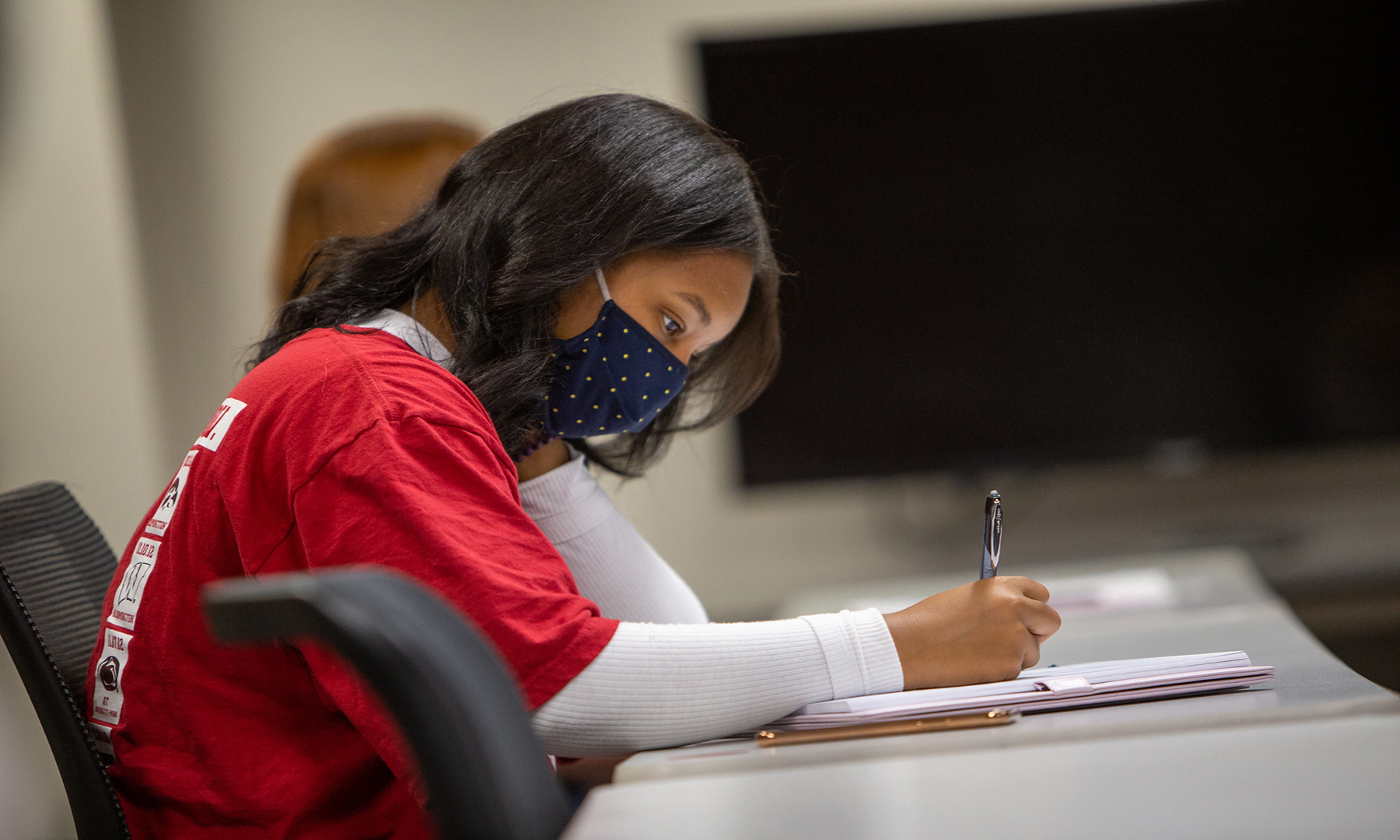Office of Admissions

Fall 2018 brought in a record class of first-time college students (639) followed by a close second place record in 2019 (637), setting the stage for some lofty recruitment goals for the entering class of 2020. The fall 2020 recruitment cycle started out with our traditional recruitment activities. We visited area high schools, hosted well attended large open house days, and participated in local college fairs. Transitioning into “yield” season in the early spring of 2020, we felt good about our pool of admitted students and were eager to funnel them through our orientation and registration process.
As with everywhere, our processes were forced to pivot on a dime around March 15th. Our first challenge was to replace – in a positive way – all of the messaging we had been sending to students for months regarding their next steps. Hundreds of students had been diligent in signing up for their on-campus orientation, and we knew that our highest-achieving students had likely signed up for the earliest events. To honor our earliest takers, our Admissions and CRM teams completely reprogrammed Salesforce to communicate the new process and dates for individual meetings via email first to those early students, and then gradually to all remaining students. This drove students to register for two meetings to be held over Zoom.
To support the new process, we assembled a team of staff we called the Cougar Crew (after our campus mascot). All were Student Affairs professionals with varying experience in admissions and student programming whose regular duties had been disrupted by the pandemic, and none had an academic advising background. Leadership from Academic Advising provided the Crew a four-hour crash course on how to help students use campus technology for tasks such as creating their first computing account and email, reviewing Zoom features, and navigating iGPS and our student information system to enroll in classes. We used this format to conduct over 1,300 individual Zoom meetings with students, yielding a class of 629 enrolled beginners for the fall of 2020. The number didn’t break the record, but we considered it an accomplishment to only be down 8 beginners during the middle of a pandemic.
Enrolled transfer students continued a downward trend despite an increased amount of admits for 2020 compared to 2019. We believe the uncertainty leading into fall classes, job losses, a shaky economy, and unknown school schedules for dependents factored into their decision of starting classes.
The chart below shows admitted and enrolled students fall 2020 compared to fall 2019.
|
|
Fall 2019 Admits |
Fall 2020 Admits |
Fall 2019 Enrolled |
Fall 2020 Enrolled |
|
FYU (Beginners) |
1718 |
1918 |
637 |
629 |
|
TRU (Transfers) |
407 |
425 |
239 |
220 |

Other accomplishments worth noting regarding the incoming class of 2020 include the increased diversity of non-white students. We saw a 107% increase of new enrolled Black/African students and a 37% increase of new enrolled American Hispanic/Latino students in our beginner cohort for fall. We attribute some of this increase to the reduced barrier of requiring a standardized test score, a movement IU Kokomo was looking to permanently implement beginning in 2021, but began early due to the unavailability of testing. In the absence of a test score, we shifted our admissions criteria to solely look at the applicant’s high school GPA. We know this to be the best indicator of college success nevertheless. In transitioning our standards, we also built in criteria for conditional admission. New for fall 2020, conditional admits were required to attend a summer bridge experience prior to enrollment. We look forward to tracking this group of students who came in under the “test waiver” policy and making tweaks to our admissions standards in our new permanent test optional environment.
